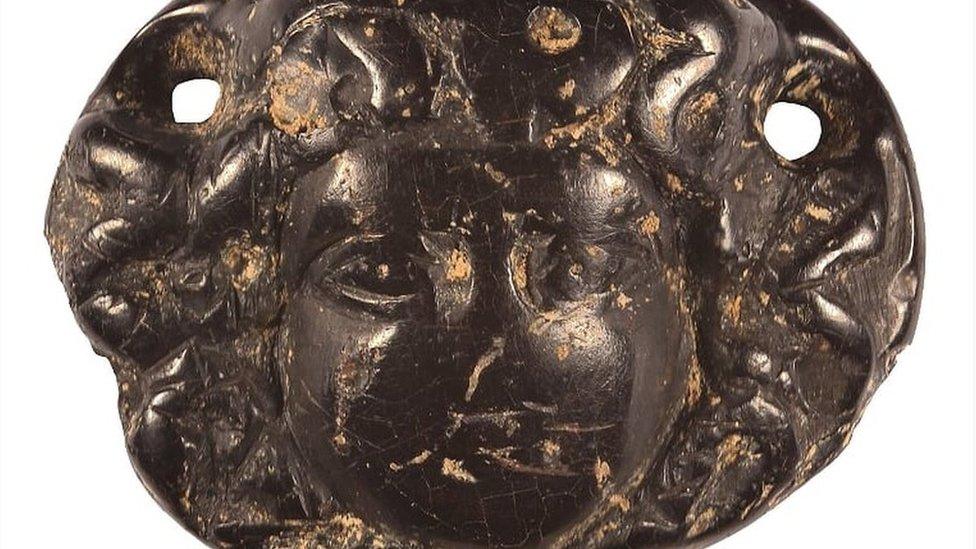Comb made from human skull found among A14 artefacts
- Published
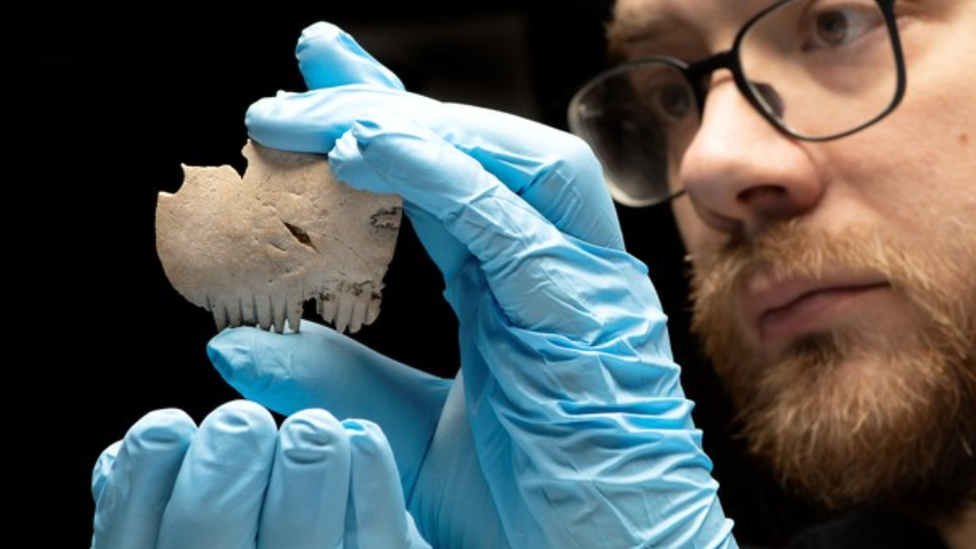
Michael Marshall holds the Bar Hill Comb, found during excavations on the A14
An "incredibly rare" ancient comb made from human skull has been identified among thousands of artefacts recovered during archaeological excavations.
The accessory, dubbed the Bar Hill Comb, was found by scientists from the Museum of London Archaeology, external (MOLA).
It was among 280,000 items of interest collected between 2016 and 2018 during the A14 improvement scheme.
Michael Marshall, the finds team lead, described the Iron Age discovery near Cambridge as "truly astonishing".
He said only two other comparable examples have ever been found in Britain - both within 15 miles (24km) of the Bar Hill Comb.
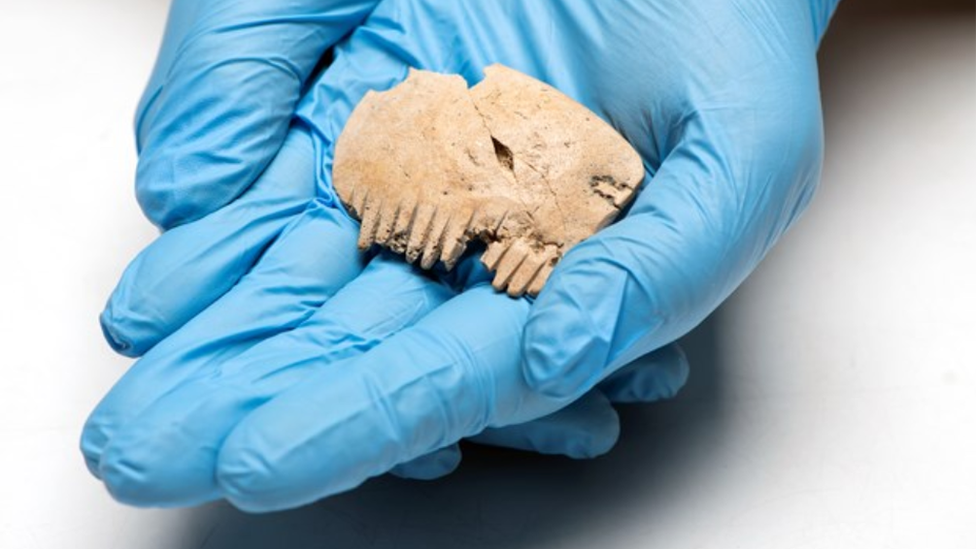
Scientists believe it may never have been used as a comb but was worn around the neck
The team has been analysing artefacts recovered during the archaeological excavations that preceded the construction of the £1.5bn National Highways A14 Cambridge to Huntingdon Improvement Scheme, external.
The ancient bone comb, dating from the Iron Age (750 BC - 43 AD), was found at Bar Hill, four miles (6.4km) north-west of Cambridge.
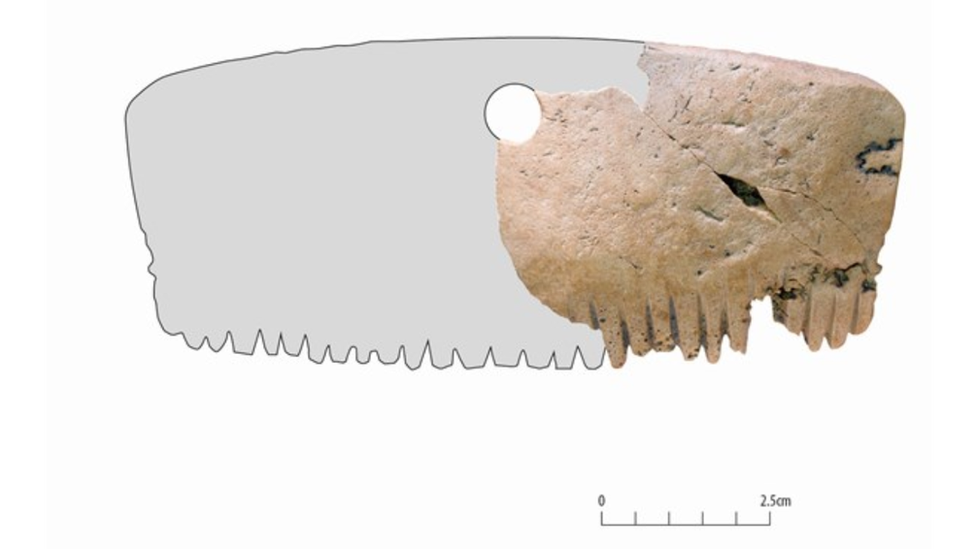
The presence of a hole in the comb suggests it was worn as an amulet, rather than used as an accessory
Researchers said despite taking the shape and form of a comb, the exact use is not apparent but it does shine new light on ritual and belief in Iron Age Britain including "how human remains were looked after and sometimes modified within local communities".
Objects made from human bone may have been used in special rituals relating to the dead, but others were part of everyday life, including tools.
"The Bar Hill Comb may have been a highly symbolic and powerful object for members of the local community," Mr Marshall said.
"It is possible it was carved from the skull of an important member of Iron Age society whose presence was in some way preserved and commemorated through their bones.
"To be able to see such hyper-local influences in groups of people living over 2,000 years ago is truly astonishing."

The comb was created from a section of human skull and gives some insight into how communities treated their dead
Mr Marshall said there was no evidence of wear on the comb teeth, suggesting it was never used as a functional item but the circular hole may have meant it was worm as an amulet.
"Rather than being an anonymous piece of bone, its symbolism and significance would therefore have been immediately apparent to anyone who encountered it," he said.
Only two other similar pieces have ever been found in Britain, he said, one in Earith, Cambridgeshire in the 1970s which featured carved teeth, and the second in Harston Mill in the early 2000s.

Work on the 21-mile (34km) route between Cambridge and Huntingdon began in November 2016
The Bar Hill Comb will now be kept at the Cambridgeshire Archaeology Archive, the main repository for material found as part of archaeological fieldwork in the county.
Dr Steve Sherlock, Archaeology lead for the A14 project, said: "This is a further example of the spectacular results from the excavations for the A14 improvements, adding detail and insight into our understanding of the human activity across Cambridgeshire and beyond."

Find BBC News: East of England on Facebook, external, Instagram, external and Twitter, external. If you have a story suggestion email eastofenglandnews@bbc.co.uk, external
Related topics
- Published31 January 2019

- Published18 May 2019
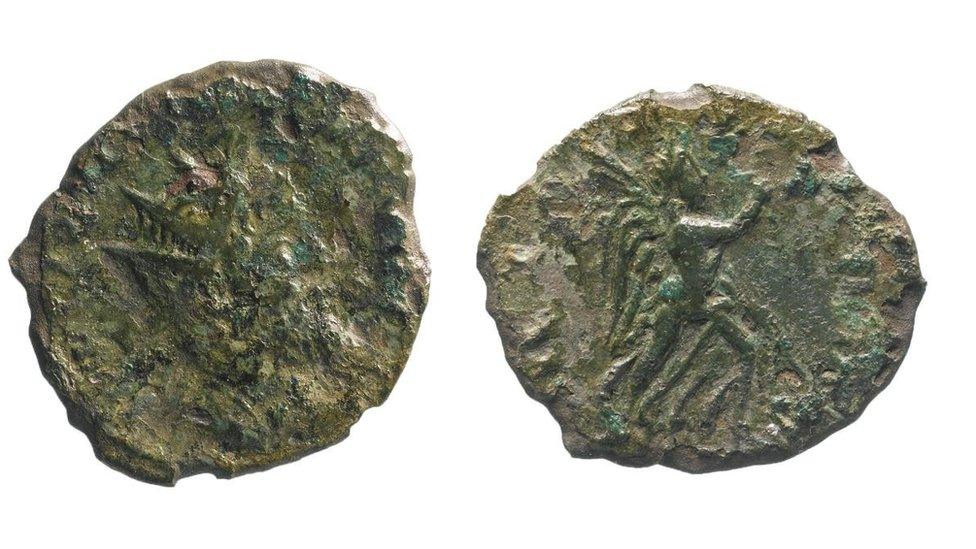
- Published4 October 2018

- Published27 March 2018
